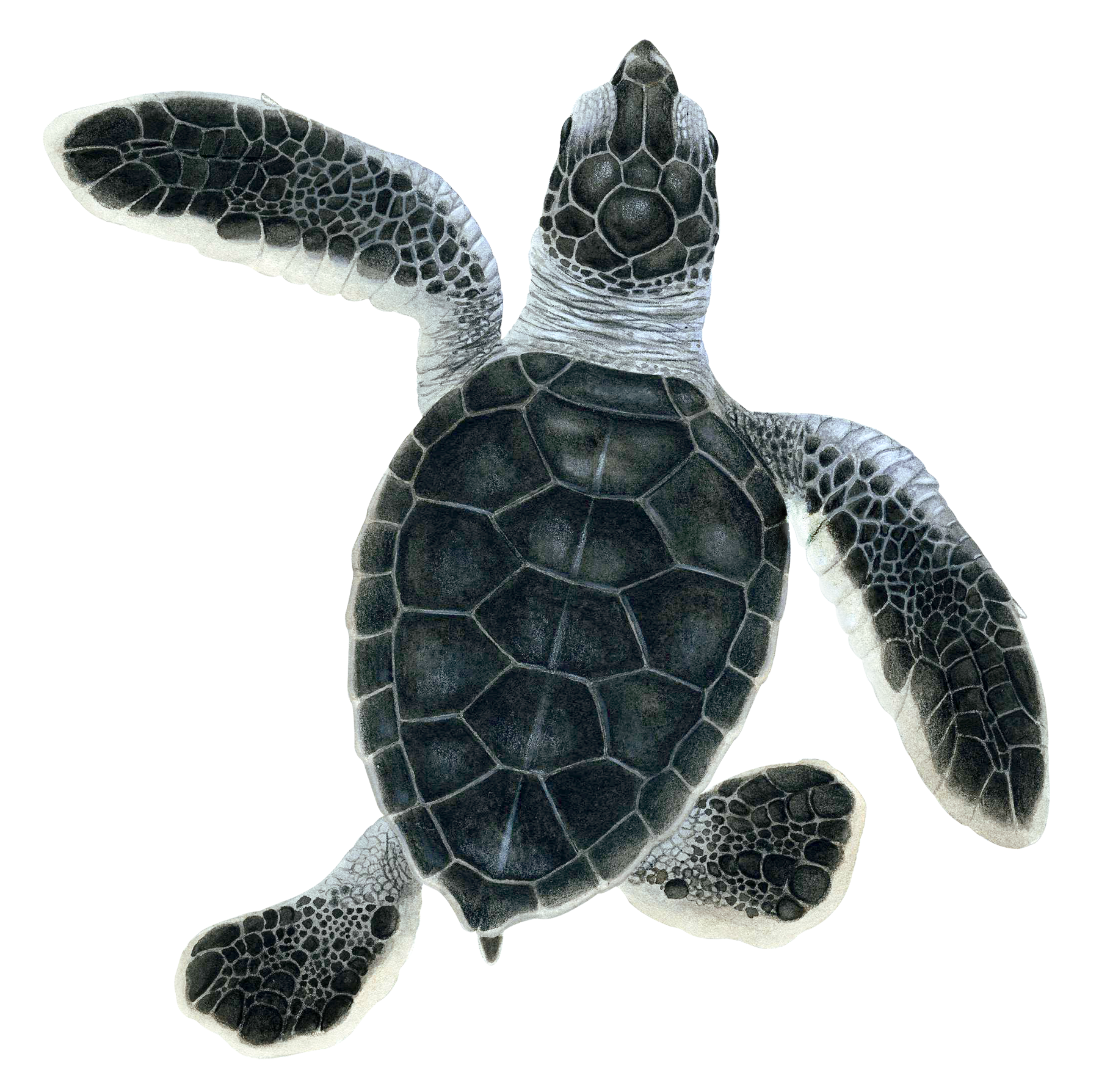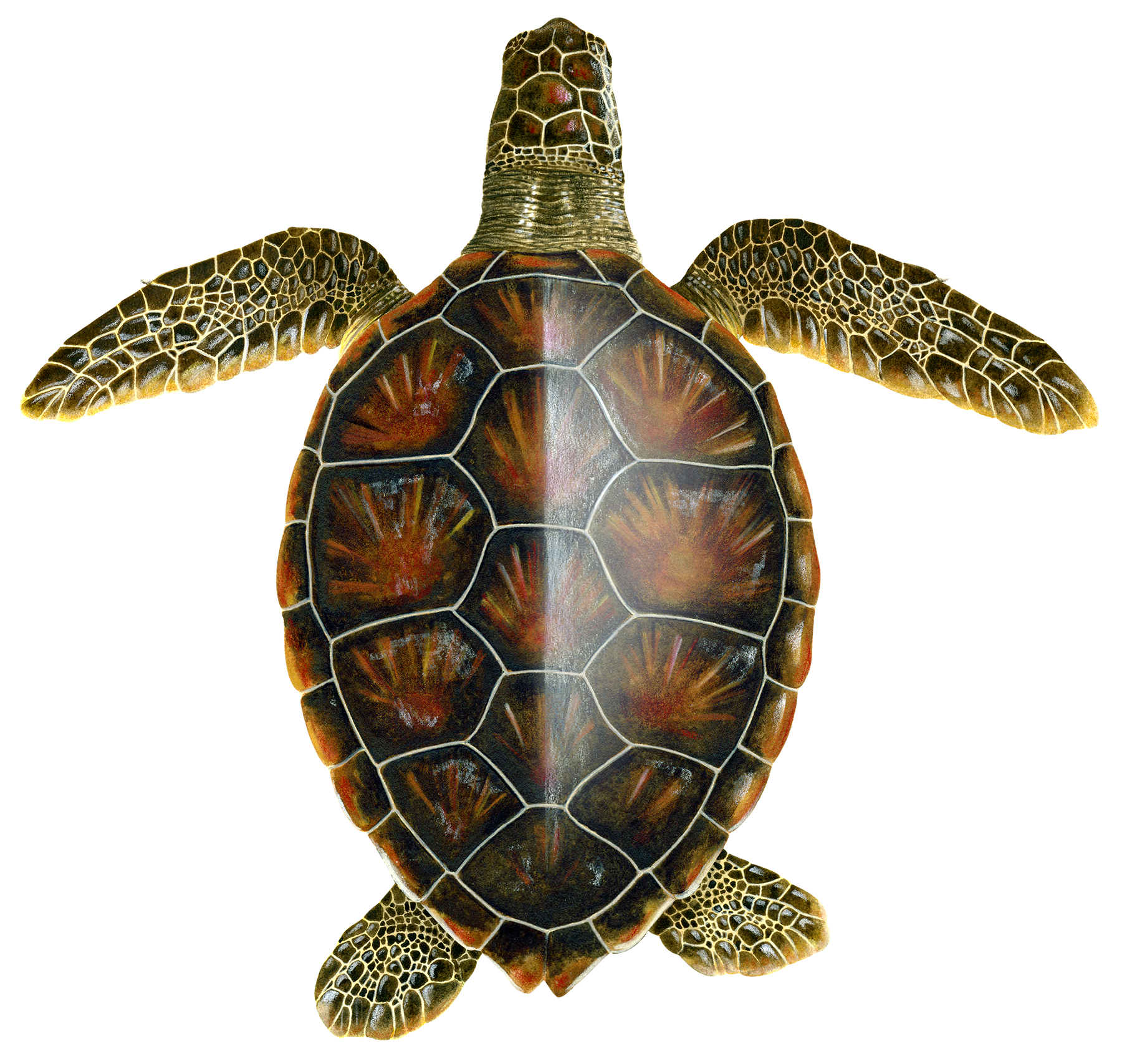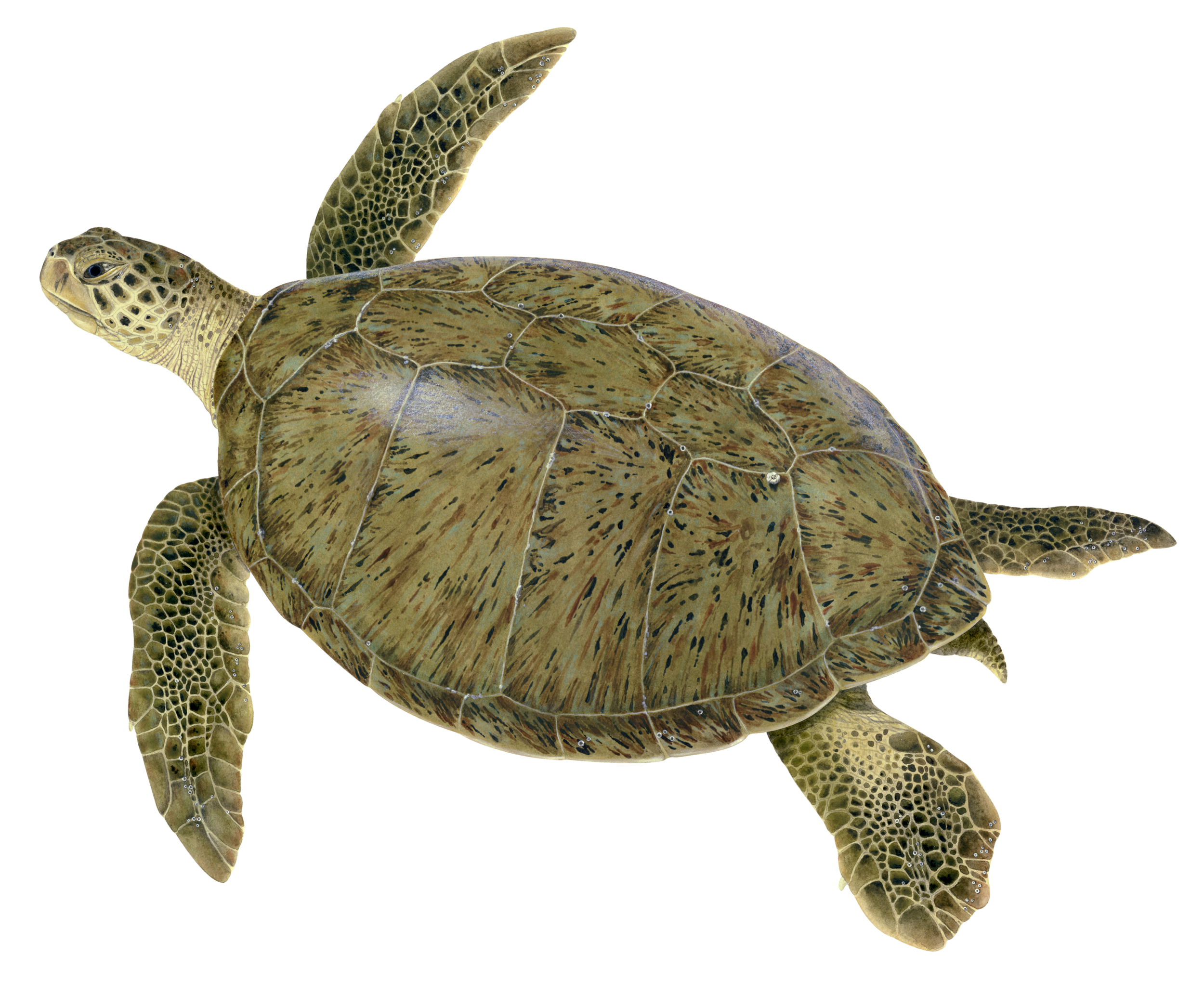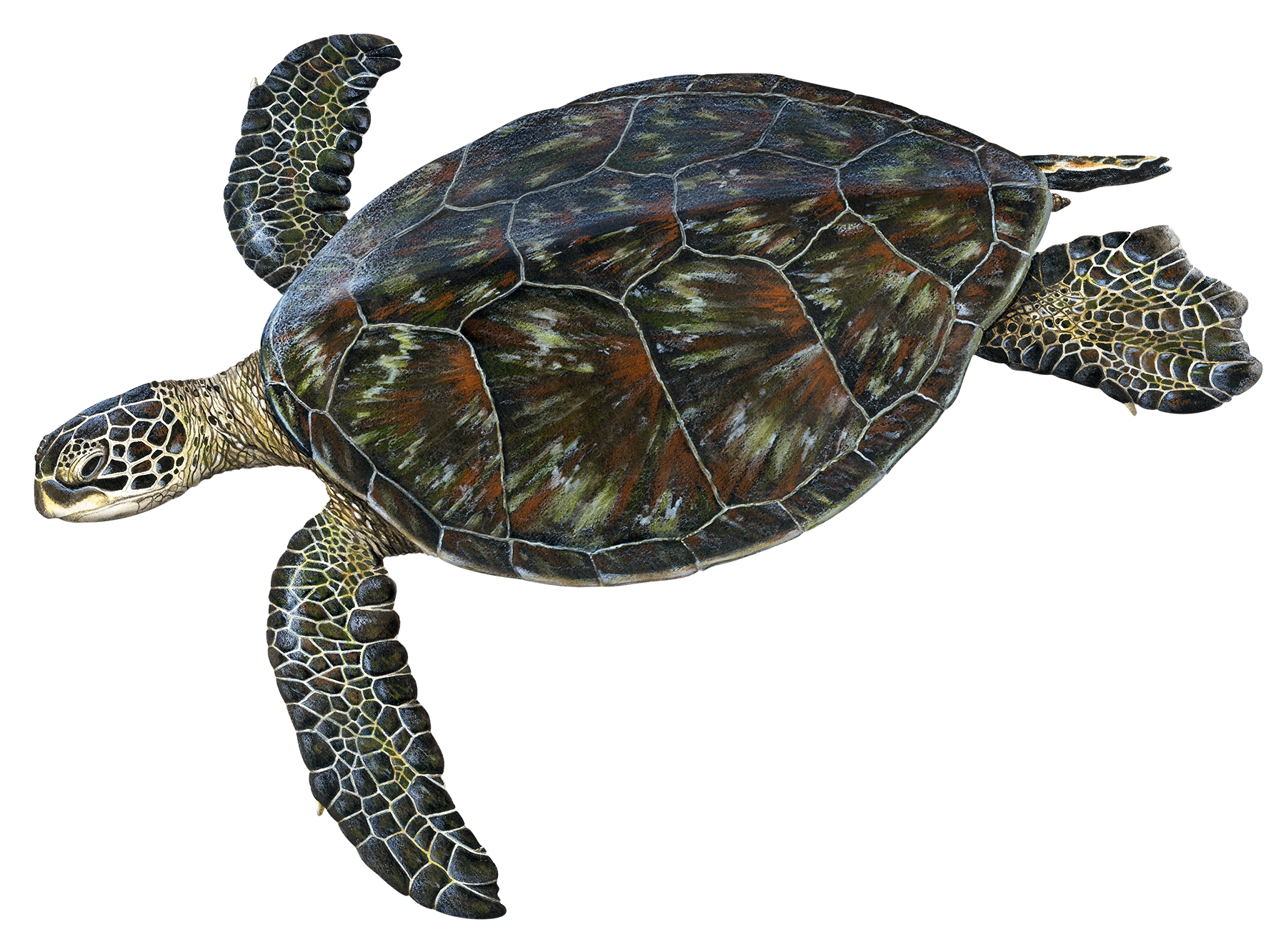Green Sea Turtle (Chelonia mydas)
Did you know that green turtles got their name because they’re green on the inside? A diet primarily consisting of algae diet makes their internal fat stores green! The Black Sea Turtle (Chelonia mydas agassizii) is a subspecies of green turtle found in the East Pacific.
Scientific Classification
Kingdom: Animalia
Phylum: Chordata
Class: Reptilia
Order: Testudines
Family: Cheloniidae
Life Cycle
Natural Lifespan: 60 - 70 years
Age at Sexual Maturity: 20 - 50 years
Average Clutch Size: 70 - 200 eggs
Average Clutches per Season: 3 - 9 clutches
Nest Incubation Period: 45 - 75 days
Remigration Interval: 2 - 4 years
Species Description
Adult Weight: 136 - 199 kgs (300 - 440 lbs)
Adult Size: 0.9 - 1.2 m (3 - 4 ft)
Appearance: Rounded head, greenish-black coloration, smooth domed carapace with teardrop shape
Diet: Seagrasses, mangrove leaves and shoots, jellyfish and algae
Habitat
Did you know that green sea turtles are one of three hard-shelled sea turtle species in US west coast waters that are susceptible to cold-stunning?
Geographic Range: Mostly in tropical zones, less often in subtropical zones, worldwide.
Marine Habitat Use: Coastal waters, bays, estuaries and inlets with abundant marine algae and seagrass.
Juvenile green turtles disperse into pelagic and neritic habitats along the continental shelf where they feed on a wider diet including invertebrates before returning to coastal waters and adopting a mostly herbivorous diet as adults. Whereas many species of sea turtle thermoregulate by spending time in warmer waters in the shallows or at the surface, East Pacific green turtles are known to haul out of the water and bask onshore in protected areas.
Conservation
Green turtles earned protection under many treaties and laws worldwide to address declines associated with direct consumption of meat or eggs. Although nest poaching has decreased due to community monitoring, illegal hunting of green sea turtles for personal consumption or sale within informal markets remains a challenge in many areas. Fishers likely to release other bycaught species of sea turtles may be reluctant to let green sea turtles go when they fetch a high price locally. Demand for green sea turtle meat may increase in countries where Catholicism is practiced as a substitute for other forbidden meats on Fridays during Lent.
-
Upwell’s wildlife veterinarian Dr. Heather Harris is conducting ongoing research into cold-stunned sea turtles on the US West coast, including green sea turtles. Part of this research is conducting necropsies on the turtles that do not survive, but contributes to research that will help to save future cold-stunned turtles.
In 2022, Upwell partnered with the Cayman Turtle Centre on Grand Cayman Island to deploy microsatellite tags on 30 captive-reared green sea turtles of different age classes to examine how variables such as age and size may influence the likelihood of encountering optimal foraging habitats and decreasing the risk of early mortality.
Fun Fact
Green sea turtles have serrated beaks specially evolved to aid in consumption of seagrass. Active grazing by sea turtles keeps seagrass beds healthier and aids in carbon uptake by seagrasses




